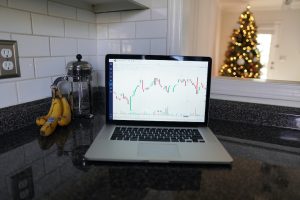Forex trading is a fast-paced market, where traders have to make quick decisions to capitalize on market movements. As a result, many traders use technical analysis tools to help them make informed decisions. One such tool is the SAR indicator. SAR stands for Stop and Reverse, and it is a popular indicator used by traders to identify trend reversals. Here we will discuss how to successfully use SAR on Forex trading for 1-minute trade.
What is SAR?
SAR is a technical analysis indicator developed by J. Welles Wilder Jr. and was introduced in the 1978 book, “New Concepts in Technical Trading Systems.” The indicator is used to identify the direction of a trend and potential reversal points.
The SAR indicator is plotted on the chart and moves above or below the price depending on the trend. When the price is above the SAR, it indicates a bullish trend. Conversely, if the price is below the SAR, it indicates a bearish trend. The SAR is also used to set stop-loss orders. When the price moves below the SAR, it indicates a reversal in the trend, and traders can exit their long position.
SAR on Forex trading
SAR can be used on any time frame, but it is particularly useful for short-term traders like those who trade on the 1-minute chart. The 1-minute chart is a popular chart for traders who want to capitalize on short-term price movements. However, trading on such a short time frame can be challenging because the market can move quickly, and traders need to make fast decisions.
To use SAR on Forex trading for 1-minute trade, traders need to follow these steps:
Step 1: Set up the chart
The first step is to set up the chart. Traders can use any trading platform, but it is recommended to use a platform that has the SAR indicator built-in. Once the platform is set up, traders should select the 1-minute timeframe for their chart.
Step 2: Apply the SAR indicator
The SAR indicator can be found under the trend indicators tab on most trading platforms. Once the indicator is selected, traders can adjust the settings to suit their trading style. The default settings for SAR are 0.02 for the acceleration factor and 0.2 for the maximum value.
Step 3: Analyze the chart
After applying the SAR indicator, traders need to analyze the chart to identify potential trading opportunities. They should look for the SAR moving above or below the price, indicating a potential trend reversal.
For example, if the SAR is above the price, indicating a bearish trend, and then the SAR moves below the price, it could indicate a potential bullish reversal. Traders can then go long on the currency pair.
Step 4: Set stop-loss and take-profit orders
To manage risk, traders should set stop-loss and take-profit orders. For example, if a trader goes long on a currency pair, they should set a stop-loss order below the SAR. If the price moves below the SAR, it indicates a reversal in the trend, and the stop-loss order will be triggered.
Traders should also set a take-profit order to exit their position when the price reaches a predetermined level. The take-profit order can be set based on the trader’s risk-reward ratio.
Conclusion
Using the SAR indicator on Forex trading for 1-minute trade can be an effective way to identify trend reversals and capitalize on short-term price movements. Traders need to set up the chart, apply the SAR indicator, analyze the chart, and set stop-loss and take-profit orders to manage risk. However, it is essential to remember that no indicator is foolproof, and traders should use the SAR indicator in conjunction with other technical analysis tools and risk management strategies to make informed trading decisions.





